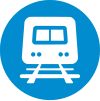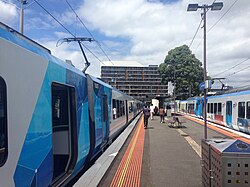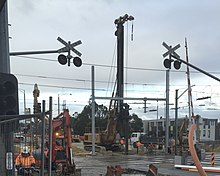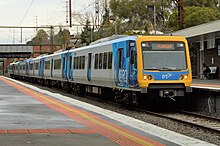Glen Waverley line
| Glen Waverley line | ||||||||||||||||||||||||||||||||||||||||||||||||||||||||||||||||||||||||||||||||||||||||||||||||||||||||||||||||||||||||||||||||||||||||||||||||||||||||||||||||||||||||||||||||||||||||||||||
|---|---|---|---|---|---|---|---|---|---|---|---|---|---|---|---|---|---|---|---|---|---|---|---|---|---|---|---|---|---|---|---|---|---|---|---|---|---|---|---|---|---|---|---|---|---|---|---|---|---|---|---|---|---|---|---|---|---|---|---|---|---|---|---|---|---|---|---|---|---|---|---|---|---|---|---|---|---|---|---|---|---|---|---|---|---|---|---|---|---|---|---|---|---|---|---|---|---|---|---|---|---|---|---|---|---|---|---|---|---|---|---|---|---|---|---|---|---|---|---|---|---|---|---|---|---|---|---|---|---|---|---|---|---|---|---|---|---|---|---|---|---|---|---|---|---|---|---|---|---|---|---|---|---|---|---|---|---|---|---|---|---|---|---|---|---|---|---|---|---|---|---|---|---|---|---|---|---|---|---|---|---|---|---|---|---|---|---|---|---|---|
 | ||||||||||||||||||||||||||||||||||||||||||||||||||||||||||||||||||||||||||||||||||||||||||||||||||||||||||||||||||||||||||||||||||||||||||||||||||||||||||||||||||||||||||||||||||||||||||||||
 X'Trapolis train at Glen Waverley station. | ||||||||||||||||||||||||||||||||||||||||||||||||||||||||||||||||||||||||||||||||||||||||||||||||||||||||||||||||||||||||||||||||||||||||||||||||||||||||||||||||||||||||||||||||||||||||||||||
| Overview | ||||||||||||||||||||||||||||||||||||||||||||||||||||||||||||||||||||||||||||||||||||||||||||||||||||||||||||||||||||||||||||||||||||||||||||||||||||||||||||||||||||||||||||||||||||||||||||||
| Service type | Commuter rail | |||||||||||||||||||||||||||||||||||||||||||||||||||||||||||||||||||||||||||||||||||||||||||||||||||||||||||||||||||||||||||||||||||||||||||||||||||||||||||||||||||||||||||||||||||||||||||||
| System | Melbourne railway network | |||||||||||||||||||||||||||||||||||||||||||||||||||||||||||||||||||||||||||||||||||||||||||||||||||||||||||||||||||||||||||||||||||||||||||||||||||||||||||||||||||||||||||||||||||||||||||||
| Status | Operational | |||||||||||||||||||||||||||||||||||||||||||||||||||||||||||||||||||||||||||||||||||||||||||||||||||||||||||||||||||||||||||||||||||||||||||||||||||||||||||||||||||||||||||||||||||||||||||||
| Locale | Melbourne, Victoria, Australia | |||||||||||||||||||||||||||||||||||||||||||||||||||||||||||||||||||||||||||||||||||||||||||||||||||||||||||||||||||||||||||||||||||||||||||||||||||||||||||||||||||||||||||||||||||||||||||||
| Predecessor |
| |||||||||||||||||||||||||||||||||||||||||||||||||||||||||||||||||||||||||||||||||||||||||||||||||||||||||||||||||||||||||||||||||||||||||||||||||||||||||||||||||||||||||||||||||||||||||||||
| First service | 24 March 1890 | |||||||||||||||||||||||||||||||||||||||||||||||||||||||||||||||||||||||||||||||||||||||||||||||||||||||||||||||||||||||||||||||||||||||||||||||||||||||||||||||||||||||||||||||||||||||||||||
| Current operator(s) | Metro Trains | |||||||||||||||||||||||||||||||||||||||||||||||||||||||||||||||||||||||||||||||||||||||||||||||||||||||||||||||||||||||||||||||||||||||||||||||||||||||||||||||||||||||||||||||||||||||||||||
| Former operator(s) |
| |||||||||||||||||||||||||||||||||||||||||||||||||||||||||||||||||||||||||||||||||||||||||||||||||||||||||||||||||||||||||||||||||||||||||||||||||||||||||||||||||||||||||||||||||||||||||||||
| Route | ||||||||||||||||||||||||||||||||||||||||||||||||||||||||||||||||||||||||||||||||||||||||||||||||||||||||||||||||||||||||||||||||||||||||||||||||||||||||||||||||||||||||||||||||||||||||||||||
| Termini | Flinders Street Glen Waverley | |||||||||||||||||||||||||||||||||||||||||||||||||||||||||||||||||||||||||||||||||||||||||||||||||||||||||||||||||||||||||||||||||||||||||||||||||||||||||||||||||||||||||||||||||||||||||||||
| Stops | 20 (including City Loop stations) | |||||||||||||||||||||||||||||||||||||||||||||||||||||||||||||||||||||||||||||||||||||||||||||||||||||||||||||||||||||||||||||||||||||||||||||||||||||||||||||||||||||||||||||||||||||||||||||
| Distance travelled | 21.3 km (13.2 mi) | |||||||||||||||||||||||||||||||||||||||||||||||||||||||||||||||||||||||||||||||||||||||||||||||||||||||||||||||||||||||||||||||||||||||||||||||||||||||||||||||||||||||||||||||||||||||||||||
| Average journey time | 36 minutes (not via City Loop) | |||||||||||||||||||||||||||||||||||||||||||||||||||||||||||||||||||||||||||||||||||||||||||||||||||||||||||||||||||||||||||||||||||||||||||||||||||||||||||||||||||||||||||||||||||||||||||||
| Service frequency |
| |||||||||||||||||||||||||||||||||||||||||||||||||||||||||||||||||||||||||||||||||||||||||||||||||||||||||||||||||||||||||||||||||||||||||||||||||||||||||||||||||||||||||||||||||||||||||||||
| Line(s) used | Glen Waverley | |||||||||||||||||||||||||||||||||||||||||||||||||||||||||||||||||||||||||||||||||||||||||||||||||||||||||||||||||||||||||||||||||||||||||||||||||||||||||||||||||||||||||||||||||||||||||||||
| Technical | ||||||||||||||||||||||||||||||||||||||||||||||||||||||||||||||||||||||||||||||||||||||||||||||||||||||||||||||||||||||||||||||||||||||||||||||||||||||||||||||||||||||||||||||||||||||||||||||
| Rolling stock | X'Trapolis 100 | |||||||||||||||||||||||||||||||||||||||||||||||||||||||||||||||||||||||||||||||||||||||||||||||||||||||||||||||||||||||||||||||||||||||||||||||||||||||||||||||||||||||||||||||||||||||||||||
| Track gauge | 1,600 mm (5 ft 3 in) | |||||||||||||||||||||||||||||||||||||||||||||||||||||||||||||||||||||||||||||||||||||||||||||||||||||||||||||||||||||||||||||||||||||||||||||||||||||||||||||||||||||||||||||||||||||||||||||
| Electrification | 1500 V DC overhead | |||||||||||||||||||||||||||||||||||||||||||||||||||||||||||||||||||||||||||||||||||||||||||||||||||||||||||||||||||||||||||||||||||||||||||||||||||||||||||||||||||||||||||||||||||||||||||||
| Track owner(s) | VicTrack | |||||||||||||||||||||||||||||||||||||||||||||||||||||||||||||||||||||||||||||||||||||||||||||||||||||||||||||||||||||||||||||||||||||||||||||||||||||||||||||||||||||||||||||||||||||||||||||
| ||||||||||||||||||||||||||||||||||||||||||||||||||||||||||||||||||||||||||||||||||||||||||||||||||||||||||||||||||||||||||||||||||||||||||||||||||||||||||||||||||||||||||||||||||||||||||||||
The Glen Waverley line is a commuter railway line in the city of Melbourne, Victoria, Australia.[1] Operated by Metro Trains Melbourne, it is the city's sixth shortest metropolitan railway line at 21.3 kilometres (13.2 mi). The line runs from Flinders Street station in central Melbourne to Glen Waverley station in the east, serving 20 stations including Burnley, Kooyong, East Malvern, and Jordanville.[1] The line operates for approximately 19 hours a day (from approximately 5:15 am to around 12:00 am) with 24 hour service available on Friday and Saturday nights. The line operates with headways of up to 10 minutes during peak hours and as long as 30 minutes during off-peak hours.[2] Trains on the Glen Waverley line run with two three-car formations of X'Trapolis 100 trainsets.[3]
Sections of the Glen Waverley line opened as early as 1890, with the line fully extended to Glen Waverley in 1930. The line was built to connect Melbourne with the rural towns of Kooyong, East Malvern, Mt Waverley, and Glen Waverley, amongst others.
Since the 2010s, due to the heavily utilised infrastructure of the Glen Waverley line, significant improvements and upgrades have been made. Different packages of works have upgraded the corridor to replace sleepers, upgrade signalling technology, introduce new rolling stock, and remove 2 out of the 6 remaining level crossings.[4]
History
[edit]19th century
[edit]A rail connection from Princes Bridge station to Punt Road (Richmond) was built by the Melbourne and Suburban Railway Company in 1859, with a branch line from Richmond to Burnley opening in 1861.[5] In 1890, part of what would become the Glen Waverley line opened from Burnley to Darling.[6] At the same time in 1890, a line known as the Outer Circle line opened, running from Oakleigh station to Darling, continuing to Burnley with the line continuing north to Riversdale and beyond.[7] The Outer Circle closed in sections between 1893 and 1897, with the Burnley to Waverley Road section of the line closing back to Darling in 1895.[7]
20th century
[edit]Electrification of the line to Glen Waverley occurred in three stages between 1922 and 1930. In March 1922, the section from Burnley to Darling station was electrified, with the section to East Malvern being electrified in June 1929, and the final section to Glen Waverley being completed by May 1930.[8][9] The electrification of the line allowed for the introduction of Swing Door electric multiple unit trains for the first time.[8][10]
The introduction of power signalling on the line begun in 1919 with the section from Richmond to East Richmond, with the remainder of the line converted in stages from 1922 to 1964.[11] In 1929, the Glen Waverley line began construction on an extension from Darling to East Malvern along the original track of the Outer Circle line.[12] The Outer Circle line previously begun its curve south towards Waverley Road and Oakleigh. The Glen Waverley line continued east towards Holmesglen.[12]
The 1950s saw the line undergo major upgrades, including the first centralised traffic control installation in Australia. Commissioned in September 1957 at a length of 6 miles (9.7 km) in length, the Victorian Railways installed it as a prototype for the North East standard project.[13] On 6 February 1956, the Toorak Road level crossing between Kooyong and Tooronga stations was the first in Victoria to receive boom barriers, replacing hand operated gates.[14]
New Comeng trains were introduced to the Melbourne railway system in 1981. Initially, along with the Glen Waverley line, they were only allowed to operate on the Alamein, Belgrave, Dandenong and Lilydale lines, due to the width of the trains (10 feet (3.05 m)).[15] Also in 1981, Glen Waverley line services commenced operations through the City Loop, after previously terminating at Flinders or Spencer Street stations.[16] The commencement of operations involved the service stopping at three new stations—Parliament, Melbourne Central (formally Museum), and Flagstaff.[17] The Loop follows La Trobe and Spring Streets along the northern and eastern edges of the Hoddle Grid.[18] The Loop connects with Melbourne's two busiest stations, Flinders Street and Southern Cross, via the elevated Flinders Street Viaduct.[18]
Many stations were rebuilt and level crossings removed along the corridor through the construction of road bridges during the 1970s to the late 1980s.[19] These works coincided with the construction of the Monash Freeway which runs alongside the route for part of the journey.[19]
21st century
[edit]
In 2014, the Level Crossing Removal Project announced the removal of 2 level crossings on the Glen Waverley line, to be completed in 2016 and 2020.[4][20] The removal of Burke Road, Glen Iris involved the lowering of the rail line and the reconstruction of Gardiner station.[4] This was the first crossing to be removed by the project and was completed in 2016.[4] The second removal involved raising the rail corridor above Toorak Road, Kooyong, with the crossing removed by early 2020.[20] With the removal of 2 level crossings along the corridor, only 4 crossings now remain on the Glen Waverley line.[21]
In 2021, the metropolitan timetable underwent a major rewrite, resulting in all Glen Waverley line trains operating via the City Loop alongside Alamein, Belgrave, and Lilydale services.[22]
In 2023, data from Public Transport Victoria found that the Glen Waverley line was the most on-time train service on the network.[23] Commuters on the Craigieburn line faced the highest train delays, with 10.6% of services arriving late between March 2022 and February 2023.[23] The Pakenham line experienced the most cancellations in the city's south-east, at 3.1%, excluding lines with fewer services.[23] On the positive side, the Glen Waverley line was the top performer, boasting 97.1% on-time arrivals during the same period.[23]
Network and operations
[edit]Services
[edit]Services on the Glen Waverley line operates from approximately 5:15 am to around 12:00 am daily.[9] During peak hours train frequency is 5–10 minutes while service during non-peak hours drops to 10–30 minutes throughout the entire route.[2] On Friday nights and weekends, services run 24 hours a day, with 60 minute frequencies available outside of normal operating hours.[24]
Train services on the line are also subjected to maintenance and renewal works, usually on selected Fridays and Saturdays. Shuttle bus services are provided throughout the duration of works for affected commuters.[25]
Stopping patterns
[edit]Legend – Station status
- ◼ Premium Station – Station staffed from first to last train
- ◻ Host Station – Usually staffed during morning peak, however this can vary for different stations on the network.
Legend – Stopping patterns
Some services do not operate via the City Loop
- ● – All trains stop
- ◐ – Some services do not stop
- | – Trains pass and do not stop
| Glen Waverley Services[26] | |||
|---|---|---|---|
| Station | Zone | Local | Ltd Express |
| ◼ Flinders Street | 1 | ● | ● |
| ◼ Southern Cross | ◐ | ◐ | |
| ◼ Flagstaff | ◐ | ◐ | |
| ◼ Melbourne Central | ◐ | ◐ | |
| ◼ Parliament | ◐ | ◐ | |
| ◼ Richmond | ● | ● | |
| East Richmond | ◐ | | | |
| ◼ Burnley | ● | | | |
| Heyington | ● | | | |
| Kooyong | ● | | | |
| ◻ Tooronga | ● | | | |
| Gardiner | ● | | | |
| Glen Iris | ● | | | |
| ◼ Darling | 1/2 | ● | ● |
| ◼ East Malvern | ● | ● | |
| ◻ Holmesglen | ● | ● | |
| Jordanville | 2 | ● | ● |
| ◼ Mount Waverley | ● | ● | |
| ◻ Syndal | ● | ● | |
| ◼ Glen Waverley | ● | ● | |
Operators
[edit]The Glen Waverley line has had a total of 6 operators since its opening in 1888. The majority of operations throughout its history have been government run: from its first service in 1888 until the 1999 privatisation of Melbourne's rail network, four different government operators have run the line.[27] These operators, Victorian Railways, the Metropolitan Transit Authority, the Public Transport Corporation and Hillside Trains have a combined operational length of 111 years. Hillside Trains was privatised in August 1999 and later rebranded Connex Melbourne. Metro Trains Melbourne, the current private operator, then took over the operations in 2009. Both private operators have had a combined operational period of 25 years.[28]
| Operator | Assumed operations | Ceased operations | Length of operations |
|---|---|---|---|
| Victorian Railways | 1888 | 1983 | 95 years |
| Metropolitan Transit Authority | 1983 | 1989 | 6 years |
| Public Transport Corporation | 1989 | 1998 | 9 years |
| Hillside Trains (government operator) | 1998 | 1999 | 1 years |
| Connex Melbourne | 1999 | 2009 | 10 years |
| Metro Trains Melbourne | 2009 | incumbent | 15 years (ongoing) |
Route
[edit]Glen Waverley line | ||||||||||||||||||||||||||||||||||||||||||||||||||||||||||||||||||||||||||||||||||||||||||||||||||||||||||||||||||||||||||||||||||||||||||||||||||||||||||||||||||||||||||||||||||||||||||||||||||||||||||||||||||||||||||||||||||||||||||||||||||||||||||||||||||||||||||||||||||||||||||||||||||||||||||||||||||||||||||||||||||||||||||||||||||||||||||||||||||
|---|---|---|---|---|---|---|---|---|---|---|---|---|---|---|---|---|---|---|---|---|---|---|---|---|---|---|---|---|---|---|---|---|---|---|---|---|---|---|---|---|---|---|---|---|---|---|---|---|---|---|---|---|---|---|---|---|---|---|---|---|---|---|---|---|---|---|---|---|---|---|---|---|---|---|---|---|---|---|---|---|---|---|---|---|---|---|---|---|---|---|---|---|---|---|---|---|---|---|---|---|---|---|---|---|---|---|---|---|---|---|---|---|---|---|---|---|---|---|---|---|---|---|---|---|---|---|---|---|---|---|---|---|---|---|---|---|---|---|---|---|---|---|---|---|---|---|---|---|---|---|---|---|---|---|---|---|---|---|---|---|---|---|---|---|---|---|---|---|---|---|---|---|---|---|---|---|---|---|---|---|---|---|---|---|---|---|---|---|---|---|---|---|---|---|---|---|---|---|---|---|---|---|---|---|---|---|---|---|---|---|---|---|---|---|---|---|---|---|---|---|---|---|---|---|---|---|---|---|---|---|---|---|---|---|---|---|---|---|---|---|---|---|---|---|---|---|---|---|---|---|---|---|---|---|---|---|---|---|---|---|---|---|---|---|---|---|---|---|---|---|---|---|---|---|---|---|---|---|---|---|---|---|---|---|---|---|---|---|---|---|---|---|---|---|---|---|---|---|---|---|---|---|---|---|---|---|---|---|---|---|---|---|---|---|---|---|---|---|---|---|---|---|---|---|---|---|---|---|---|---|---|---|---|---|---|---|---|---|---|---|---|---|---|---|---|---|---|---|---|---|---|---|---|---|
| ||||||||||||||||||||||||||||||||||||||||||||||||||||||||||||||||||||||||||||||||||||||||||||||||||||||||||||||||||||||||||||||||||||||||||||||||||||||||||||||||||||||||||||||||||||||||||||||||||||||||||||||||||||||||||||||||||||||||||||||||||||||||||||||||||||||||||||||||||||||||||||||||||||||||||||||||||||||||||||||||||||||||||||||||||||||||||||||||||
| Glen Waverley (physical track) | |
|---|---|
| Overview | |
| Status | Operational with passenger services from Flinders Street to Glen Waverley |
| Owner |
|
| Locale | Melbourne, Victoria, Australia |
| Termini | |
| Connecting lines | All metropolitan, regional, and interstate |
| Former connections | Outer Circle |
| Stations |
|
| Service | |
| Services | Glen Waverley |
| History | |
| Commenced | 24 March 1890 |
| Opened |
|
| Completed | 5 May 1930 |
| Electrified |
|
| Technical | |
| Line length | 21.3 km (13.2 mi) |
| Number of tracks |
|
| Track gauge | 1,600 mm (5 ft 3 in) |
| Electrification | 1500 V DC overhead |
| Operating speed | 95 km/h (59 mph) – Electric |
| Signalling | Automatic block signaling |
| Maximum incline | 1 in 30 (3.33%) |
The Glen Waverley line forms a mostly curved route from the Melbourne central business district to its terminus in Glen Waverley. The route is 21.3 kilometres (13.2 mi) long and is predominantly doubled tracked. Between Flinders Street station and Richmond, the track is widened to 12 tracks, narrowing to 4 tracks between Richmond and Burnley before again narrowing to 2 tracks between Burnley and Glen Waverley.[29] After departing from its terminus at Flinders Street, the Glen Waverley line traverses both flat and hilly country with few curves and fairly minimal earthworks for most of the line. The journey from Holmesglen to the terminus involves some of the steepest grades in Melbourne (1 in 30).[30] Sections of the line have been elevated or lowered into a cutting to eliminate level crossings.[31] However, a small number of level crossings are still present with no current plans to remove them.[32]
The line follows the same alignment as the Alamein, Belgrave, and Lilydale lines with the four services splitting onto different routes at Burnley. The Glen Waverley line goes on its south eastern alignment, whereas the Alamein, Belgrave, and Lilydale lines take an eastern alignment towards their final destinations.[33] The rail line goes through built-up suburbs towards its terminus in Glen Waverley.[33]
Stations
[edit]The line serves 20 stations across 21 kilometres (13 mi) of track. The stations are a mix of elevated, lowered, underground, and ground level designs. Underground stations are present only in the City Loop, with the majority of elevated and lowered stations being constructed as part of level crossing removals.[34][35]
| Station | Opened[37] | Closed[37] | Age | Notes[37] |
|---|---|---|---|---|
| Parliament | 22 January 1983 | 42 years | ||
| Melbourne Central | 26 January 1981 | 43 years |
| |
| Flagstaff | 27 May 1985 | 39 years | ||
| Southern Cross | 17 January 1859 | 166 years |
| |
| Flinders Street | 12 September 1854 | 170 years |
| |
| Princes Bridge | 8 February 1859 | 1 October 1866 | 7 years | |
| 2 April 1879 | 30 June 1980 | 101 years | ||
| Botanic Gardens | 2 March 1859 | c. April 1862 | Approx. 3 years | |
| Punt Road | 8 February 1859 | 12 December 1859 | 10 months |
|
| Richmond | 12 December 1859 | 165 years |
| |
| East Richmond | 24 September 1860 | 164 years |
| |
| Burnley | 1 May 1880 | 144 years |
| |
| Richmond Park | - | - | - |
|
| Heyington | 24 March 1890 | 134 years | ||
| Kooyong | 24 March 1890 | 134 years | ||
| Tooronga | 24 March 1890 | 134 years | ||
| Gardiner | 24 March 1890 | 134 years | ||
| Glen Iris | 24 March 1890 | 134 years | ||
| Darling | 24 March 1890 | 134 years | ||
| East Malvern | 3 February 1929 | 95 years |
| |
| Holmesglen | 5 May 1930 | 94 years | ||
| Jordanville | 5 May 1930 | 94 years | ||
| Mount Waverley | 5 May 1930 | 94 years | ||
| Syndal | 5 May 1930 | 94 years | ||
| Glen Waverley | 5 May 1930 | 94 years |
Infrastructure
[edit]Rolling stock
[edit]The Glen Waverley line uses X'Trapolis 100 electric multiple unit (EMU) trains operating in a two three-car configuration, with three doors per side on each carriage, and can accommodate up to 432 seated passengers in each six-car configuration.[38] The trains were originally built between 2002 and 2004 as well as between 2009 and 2020 with a total of 212 three-car sets constructed. The trains are shared with 7 other metropolitan train lines and have been in service since 2003.[38] Comeng trains are approved for revenue service on the line, but they don't run due to the abundance of X'trapolis trains.[39]
Alongside the passenger trains, Glen Waverley line tracks and equipment are maintained by a fleet of engineering trains. The four types of engineering trains are: the shunting train; designed for moving trains along non-electrified corridors and for transporting other maintenance locomotives, for track evaluation; designed for evaluating track and its condition, the overhead inspection train; designed for overhead wiring inspection, and the infrastructure evaluation carriage designed for general infrastructure evaluation.[40] Most of these trains are repurposed locomotives previously used by V/Line, Metro Trains, and the Southern Shorthaul Railroad.[40]
Accessibility
[edit]
In compliance with the Disability Discrimination Act of 1992, all stations that are newly built or rebuilt are fully accessible.[41] Half of stations on the corridor haven't been upgraded to meet these guidelines.[42] These stations do feature ramps, however, they have a gradient greater than 1 in 14.[42] Stations that are fully accessible feature ramps that have a gradient less than 1 in 14, have at-grade paths, or feature lifts.[42] These stations typically also feature tactile boarding indicators, independent boarding ramps, wheelchair accessible myki barriers, hearing loops, and widened paths.[42][43]
Projects improving station accessibility have included the Level Crossing Removal Project, which involves station rebuilds and upgrades, and individual station upgrade projects.[44][45] These works have made significant strides in improving network accessibility, with half of Glen Waverley line stations classed as fully accessible.[46] Potential future station upgrade projects will continue to increase the number of fully accessible stations over time.
Signalling
[edit]The Glen Waverley line uses three position signalling which is widely used across the Melbourne train network.[47] Three position signalling was first introduced on the line in 1919, with the final section of the line converted to the new type of signalling in 1964.[48]
References
[edit]- ^ a b "Glen Waverley Line". Public Transport Victoria. Archived from the original on 7 September 2018. Retrieved 18 February 2023.
- ^ a b "New timetable train line information – Public Transport Victoria". 1 March 2021. Archived from the original on 1 March 2021. Retrieved 18 December 2022.
- ^ Carey, Adam (7 November 2014). "Trains are working better but seating not guaranteed". The Sydney Morning Herald. Archived from the original on 6 February 2023. Retrieved 6 February 2023.
- ^ a b c d Victoria’s Big Build (22 June 2022). "Burke Road, Glen Iris". Victoria’s Big Build. Archived from the original on 24 October 2022. Retrieved 18 February 2023.
- ^ Map of Melbourne and Suburban Company Lines, 1857–1862, archived from the original on 8 August 2008, retrieved 14 November 2011
- ^ Map of Melbourne and Suburban Company Lines, 1857–1862, archived from the original on 8 August 2008, retrieved 14 November 2011
- ^ a b "The Outer Circle – Melbourne's Forgotten Railway". outercircleline.com.au. Archived from the original on 25 November 2022. Retrieved 18 February 2023.
- ^ a b "Report upon the Application of electric traction to the Melbourne suburban railway system". Trove. Archived from the original on 24 January 2023. Retrieved 20 December 2022.
- ^ a b "More Melburnians could hop on a train or tram every 10 minutes under ambitious Greens proposal". ABC News. 22 August 2022. Archived from the original on 17 December 2022. Retrieved 18 December 2022.
- ^ S.E. Dornan and R.G. Henderson: (1979) The Electric Railways of Victoria
- ^ Fisher, Peter (2007). Victorian Signalling: by Accident or Design?. Australian Railway Historical Society (Victorian Division). ISBN 978-1-920892-50-0
- ^ a b "GLEN WAVERLEY RAILWAY". Argus. 1 February 1929. Retrieved 17 August 2023.
- ^ Leo J. Harrigan (1962). Victorian Railways to '62. Public Relations and Betterment Board. p. 176.
- ^ "Boom Barriers Operate Today". The Age. 6 February 1956. p. 3.
- ^ "Traffic". Newsrail. Australian Railway Historical Society. August 1981. p. 185.
- ^ "Trove". trove.nla.gov.au. Archived from the original on 14 January 2023. Retrieved 14 January 2023.
- ^ "City Loop closure". Public Transport Victoria. Archived from the original on 14 January 2023. Retrieved 14 January 2023.
- ^ a b "Guide to navigating the City Loop | Public Transport Users Association (Victoria, Australia)". Archived from the original on 12 December 2022. Retrieved 14 January 2023.
- ^ a b "Glen Waverley". Victorian Railways. VicRail. July 1975. p. 103.
- ^ a b Victoria’s Big Build (21 June 2022). "Toorak Road, Kooyong". Victoria’s Big Build. Archived from the original on 20 September 2022. Retrieved 18 February 2023.
- ^ "Level crossings – November 2022 update". Daniel Bowen. 5 November 2022. Retrieved 17 August 2023.
- ^ "New timetable train line information". Public Transport Victoria. Archived from the original on 4 February 2021. Retrieved 31 January 2021.
- ^ a b c d Yussuf, Ahmed (17 April 2023). "Commuters in Melbourne's north face biggest train delays in the state". ABC News. Retrieved 17 August 2023.
- ^ "Melbourne Weekend Night Network Train Map" (PDF). 2022. Archived (PDF) from the original on 12 January 2023. Retrieved 18 December 2022.
- ^ "Where do train replacement buses come from?". ABC News. 15 November 2016. Archived from the original on 14 December 2022. Retrieved 18 December 2022.
- ^ "Glen Waverley Line". Public Transport Victoria. Archived from the original on 11 November 2022. Retrieved 26 December 2022.
- ^ "Melbourne's Rail Network to be Split" Railway Digest November 1997 page 12
- ^ Cooper, Mex (25 June 2009). "New train, tram operators for Melbourne". The Age. Archived from the original on 1 January 2023. Retrieved 1 January 2023.
- ^ Carey, Adam (4 June 2015). "Multimillion-dollar Richmond railway station revamp in limbo". The Age. Archived from the original on 12 December 2022. Retrieved 12 December 2022.
- ^ "Metropolitan Grade Diagrams". victorianrailways.net. Archived from the original on 12 February 2023. Retrieved 16 February 2023.
- ^ Wong, Marcus (10 May 2021). "Level crossing removals in 1920s Melbourne". Waking up in Geelong. Archived from the original on 12 December 2022. Retrieved 12 December 2022.
- ^ Anderton, Gary (20 November 2020). "Key level crossing removals must feature in this year's State Budget – Michael O'Brien MP, Member for Malvern". Michael O'Brien MP. Archived from the original on 15 February 2023. Retrieved 15 February 2023.
- ^ a b Wray, Tyson. "Melbourne's train lines definitively ranked from best to worst". Time Out Melbourne. Archived from the original on 12 December 2022. Retrieved 12 December 2022.
- ^ Lee, Robert S. (2007). The railways of Victoria 1854–2004. Rosemary Annable, Donald S. Garden. Carlton, Vic.: Melbourne University Publishing. ISBN 978-0-522-85134-2. OCLC 224727085. Archived from the original on 8 May 2022. Retrieved 29 December 2022.
- ^ "Major Construction Begins on First Level Crossing Removal | Premier of Victoria". premier.vic.gov.au. Archived from the original on 6 January 2023. Retrieved 17 February 2023.
- ^ a b c d e f g h i j k "What year did your railway station open? | Public Transport Users Association (Victoria, Australia)". 3 August 2018. Archived from the original on 9 December 2022. Retrieved 9 December 2022.
- ^ a b c Anderson, Rick (2010). Stopping All Stations. Clunes, Victoria: Full Parallel Productions. ISBN 978-0646543635. OCLC 671303814.
- ^ a b "Franchise Agreement – Train" (PDF). 1 March 2014. Archived from the original on 1 March 2014. Retrieved 17 February 2023.
{{cite web}}: CS1 maint: bot: original URL status unknown (link) - ^ "WTT Network Configuration Rolling Stock". CMS Portal Metro Trains. 23 September 2024. Retrieved 23 September 2024.
- ^ a b "NETWORK SERVICE PLAN | Addenda". 1 February 2011. Archived from the original on 7 March 2011.
- ^ "Accessibility – Public Transport Ombudsman Victoria". ptovic.com.au. Archived from the original on 3 January 2023. Retrieved 3 January 2023.
- ^ a b c d "Station accessibility features". Metro Trains Melbourne. 2023. Archived from the original on 8 December 2022. Retrieved 3 January 2023.
- ^ "Accessing public transport". City of Melbourne. n.d. Archived from the original on 6 December 2022. Retrieved 3 January 2023.
- ^ "Left behind: the fight for accessible public transport in Victoria". The Guardian. 12 June 2022. Archived from the original on 3 January 2023. Retrieved 3 January 2023.
- ^ Victoria’s Big Build (17 October 2022). "Urban design framework". Victoria’s Big Build. Archived from the original on 3 January 2023. Retrieved 3 January 2023.
- ^ "Access Guide". www.metrotrains.com.au. Retrieved 17 August 2023.
- ^ "A walk around Gunning". vrhistory.com. Archived from the original on 15 August 2022. Retrieved 7 February 2023.
- ^ "National Code 3-Position Speed Signalling" (PDF). Archived (PDF) from the original on 7 February 2023. Retrieved 17 February 2023.
External links
[edit]- Glen Waverley line timetable
- Network map
 Media related to Glen Waverley railway line at Wikimedia Commons
Media related to Glen Waverley railway line at Wikimedia Commons

